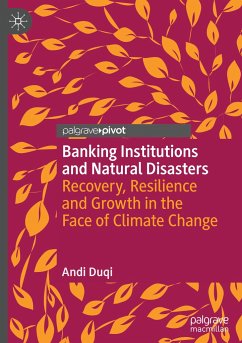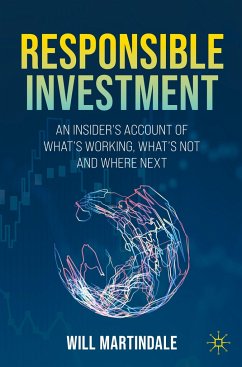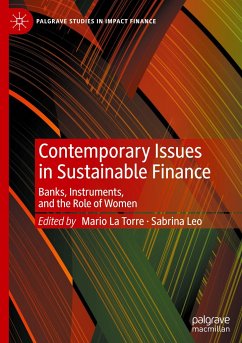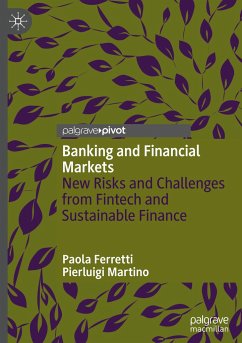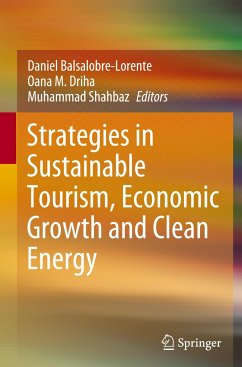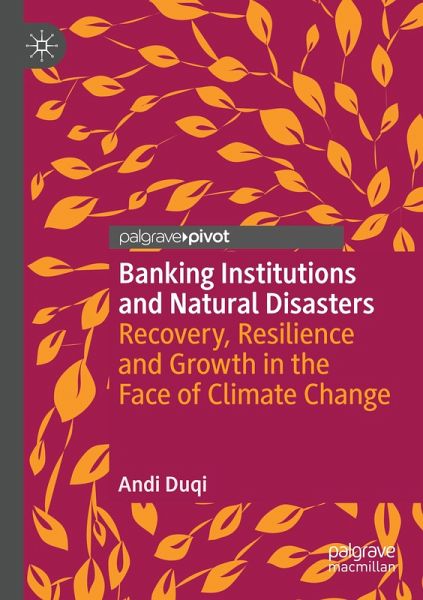
Banking Institutions and Natural Disasters
Recovery, Resilience and Growth in the Face of Climate Change
Versandkostenfrei!
Versandfertig in 6-10 Tagen
38,99 €
inkl. MwSt.
Weitere Ausgaben:

PAYBACK Punkte
19 °P sammeln!
This book looks more closely at how natural disasters impact bank activity and how banks can support economic recovery after a natural disaster. The importance of banks in this context is underscored by increasing regulatory attention on their role in fostering a sustainable future, but also on the risks that climate change poses to bank stability.Humanity has tried to cope with the short- and long-term economic consequences of natural disasters for centuries. However, the severity of these events is constantly increasing in magnitude, due to the alteration of the earth's climate and the envir...
This book looks more closely at how natural disasters impact bank activity and how banks can support economic recovery after a natural disaster. The importance of banks in this context is underscored by increasing regulatory attention on their role in fostering a sustainable future, but also on the risks that climate change poses to bank stability.
Humanity has tried to cope with the short- and long-term economic consequences of natural disasters for centuries. However, the severity of these events is constantly increasing in magnitude, due to the alteration of the earth's climate and the environment. They pose a serious threat to the lives of millions of people especially in less developed countries. At the same time, the international community has acknowledged that weather hazards' impact and countries' resilience to them are affected by various socio-economic factors, such as the well-functioning of financial institutions, especially commercial banks.
Banks will inevitably adapt their strategies to address concerns arising from climate change. In doing this, the book discusses partnerships with international cooperation institutions, other financial intermediaries, and local governments, so that the green transition ensures an inclusive growth for all, especially the most vulnerable parts of our societies. This book is of interest to researchers, academics, and students of sustainable finance and climate finance.
Humanity has tried to cope with the short- and long-term economic consequences of natural disasters for centuries. However, the severity of these events is constantly increasing in magnitude, due to the alteration of the earth's climate and the environment. They pose a serious threat to the lives of millions of people especially in less developed countries. At the same time, the international community has acknowledged that weather hazards' impact and countries' resilience to them are affected by various socio-economic factors, such as the well-functioning of financial institutions, especially commercial banks.
Banks will inevitably adapt their strategies to address concerns arising from climate change. In doing this, the book discusses partnerships with international cooperation institutions, other financial intermediaries, and local governments, so that the green transition ensures an inclusive growth for all, especially the most vulnerable parts of our societies. This book is of interest to researchers, academics, and students of sustainable finance and climate finance.



